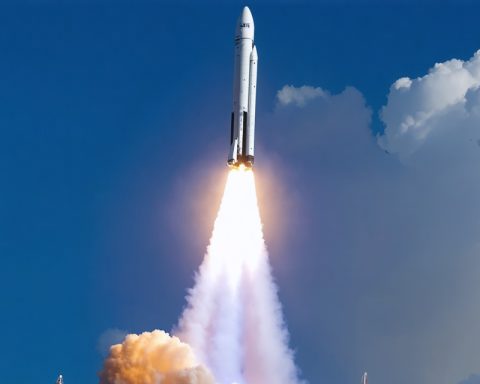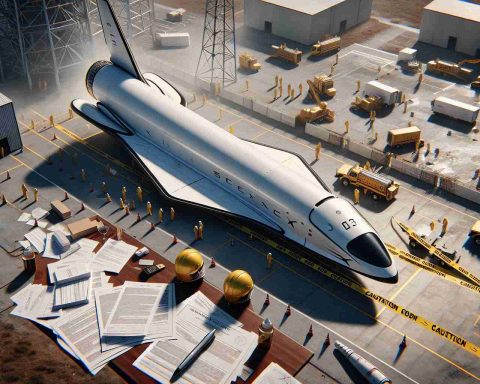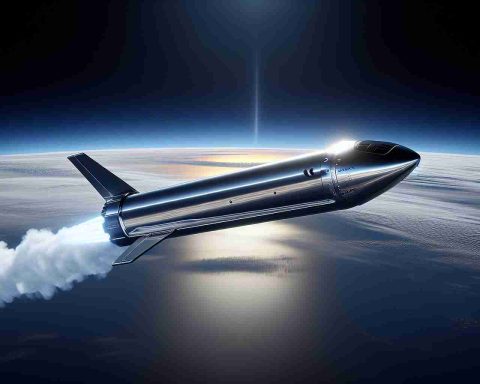The dreams of an emerging Japanese space startup faced another significant obstacle. After their latest attempt to launch the Kairos rocket, chaos ensued just minutes after takeoff.
On Wednesday, Japan’s Space One initiated the launch from its Spaceport Kii located in Kushimoto, Wakayama Prefecture. The rocket initially showed promising signs of a successful flight, but calamity struck shortly after. Roughly two minutes into its ascent, the Kairos lost control and began to spiral towards the ground. The company’s director, Mamoru Endo, later explained that the rocket self-destructed when it registered critical issues with its engine nozzle and trajectory.
This mission was particularly important, as the Kairos was tasked with delivering five small satellites from various organizations, including the Taiwan Space Agency and several Japanese enterprises. Space One has been striving to become Japan’s first commercial entity capable of independently launching satellites into orbit, a feat previously achieved only by JAXA. Their inaugural attempt in March ended similarly, with the rocket exploding just seconds post-launch.
Standing at 59 feet tall and designed to launch up to 550 pounds (250 kilograms) to low Earth orbit, the Kairos is Japan’s answer to competitors like SpaceX. The ambitious startup aimed for 30 launches per year by the 2030s, although recent events could delay these goals. Despite the setback, Space One’s president expressed optimism, focusing on the valuable data gathered during this challenging event.
The Rising Challenges and Innovations in Japan’s Space Startup Scene
Overview of Space One and the Kairos Rocket
Space One, a forward-thinking Japanese space startup, is on a mission to change the landscape of satellite launches in Japan. Their latest endeavor, the Kairos rocket, experienced a challenging setback during a launch that was emblematic of the difficulties faced by emerging space companies.
Specifications of the Kairos Rocket
The Kairos rocket stands tall at 59 feet and boasts a payload capacity of up to 550 pounds (250 kilograms), which targets low Earth orbit. This aligns with global trends where compact satellites are increasingly favored for their cost-effectiveness and efficiency.
Key Features and Use Cases
The primary purpose of the Kairos rocket is to deliver small satellites into orbit. Recent missions aimed to launch satellites from various organizations like the Taiwan Space Agency. The growing market for small satellites includes applications ranging from Earth observation to telecommunications and scientific research.
Pros and Cons of Launching the Kairos Rocket
Pros:
– Localized Launch Capability: By establishing a domestic launch provider, Japan can support its satellite capacity without relying on foreign companies.
– Growing Market: The demand for small satellite launches is increasing, presenting opportunities for Space One to tap into a lucrative sector.
– Innovative Design: The Kairos incorporates modern rocket technology, potentially reducing costs for satellite deployment.
Cons:
– Technical Failures: Recent launches have been marred by failures, raising concerns about the reliability of the rocket.
– Intense Competition: Space One faces stiff competition from established players like SpaceX, Blue Origin, and Rocket Lab, which can better absorb losses from failed launches.
– Funding Challenges: Maintaining and scaling operations in the competitive space industry requires significant financial investment.
Pricing and Market Analysis
As the space launch industry rapidly evolves, pricing strategies are becoming critical for gaining market share. Startups like Space One are under pressure to offer competitive pricing without compromising quality and safety. Establishing a track record of successful missions will be essential for securing clients and contracts, especially as governmental and commercial interests escalate their space initiatives.
Trends and Innovations in the Space Sector
The landscape of space launches is shifting towards:
– Small satellite proliferation: This trend is fueled by reduced costs and the increasing capabilities of compact satellite technology.
– Reusable rocket technology: Leveraging reusable components can dramatically decrease launch costs, a strategy effectively employed by companies like SpaceX.
– Public-Private Partnerships: Collaborations between governmental space agencies and private firms are becoming more common, offering startups access to funding and technical expertise.
Looking Forward: Predictions and Insights
Despite the recent setback, optimism remains within the industry. As expressed by Space One’s leadership, learning from failures can lead to valuable innovations and adaptations. The expectation that the market for satellite launches will continue growing offers hope for resilience. Analysts predict that by the 2030s, demand for commercial launches will have expanded further, potentially creating a more diverse landscape of providers.
For those interested in following the developments within Japan’s space industry, resources are becoming more accessible. Innovations and performance analysis from missions like that of the Kairos rocket will shape future endeavors for Space One and similar companies.
Conclusion
The story of the Kairos rocket reflects both the promise and peril of the commercial space race. As Space One navigates these challenges, their resilience and ability to adapt will determine their place in the ever-evolving market of satellite launches.
For more information on the developments within the space industry, check out Space One.

















